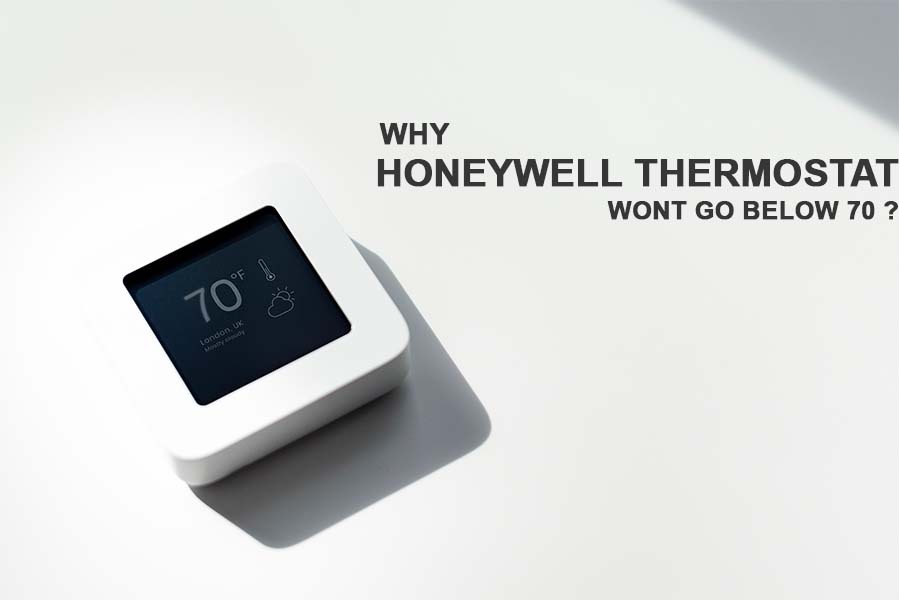A typical thermostat can regulate the temperature of a particular environment using its sensor.
Any malfunctioning or disturbance can be caused due to damage or tripped circuit breaker.
Users have reported that their Honeywell Thermostats won’t allow them to set temperature levels below 70 degrees.
If the temperature of your room does not match with the settings on your thermostat, i.e., experiencing a spike or fall more than often, then it is probably broken, or the sensor has been damaged.
This prevents it from reading the temperature of the room accurately.
This is the most likely reason for your thermostat not reading the room temperature accurately. Still, there are other reasons, too, as to why your thermostat is reading higher or lower temperatures than the ones you’ve set.
This article explains both reasons and the solution to fix when Honeywell thermostat doesn’t go below 70 degrees.
After that, you can follow the solution mentioned below, which will help you troubleshoot the issues.
Reasons Why Honeywell Thermostat Won’t Go Below 70 Degrees
The other reason for the Honeywell Thermostat not going below 70 degrees is that they are locked at 65-68 degrees.
This is done as some of the devices have a residential tendency to bear that much only. This doesn’t mean this level cannot be surpassed, but it shouldn’t be a safety measure.
Such a threshold implies that any temperature set above this will result in the freezing up of the device.
For example, suppose you operate such thermostats below 70 degrees for a long while the cooling coil on the thermostat will start freezing.
Such events can cause you a lot of repairs and expenses. Honeywell thermostats are locked at 70 degrees and cannot be set on a temperature below that to prevent such mishappenings.
But there is certainly a way out for everything, and so does this one. Unfortunately, there are a few ways you can try to bypass the temperature lock on your thermostat.
Needless to say, making changes or avoiding such a lock is not recommended.
Still, if you are confident about the safety and wish to have some additional cooling from the AC system, you can apply these to bypass the lock and have your desired temperature levels.
Firstly, press and hold the temperature up button and fan button together for a few seconds. Once you do that, you will see that the restrictive temperature settings have appeared on the screen.
You will navigate two different settings here. One is for heating limiters. You can now customize the heating limiter settings here by pressing the power up and down button.
The other setting is a cooling limiter. You can select these and set the temperature according to your choice.
Now you can set the temperature limits of cooling below 70 that you wish to set. Once you have set your desired temperature limit, you have to press the menu button to return to the thermostat’s main menu.
Now you can manage the cooling temperature according to your choice below 70.
Moreover, if you ever restart your thermostat, it will restore the previous settings and activate the lock like usual.
Safety Concerns
While you enjoy the temperature of your choice bypassing the lock, you also run the risk of losing your cooling coils to freezing.
Additionally, there is also a risk of overheating and a short circuit running the AC at a lower temperature.
Still, if you are sure about the temperature level you want, then before you start bypassing the lock, make sure to run it by the hardware manufacturer.
They will confirm whether the device you are using can withstand such changes in the temperature without freezing or breaking.
When you bypass the lock manually on your thermostat, you will also void the warranty of your device along with the cooling and heating element.
Therefore, we won’t suggest you try this unless you are 100 percent confident. Your electric bills will also experience a major spike, so that is one more thing you will have to be worried about.
